Remembering the Filipino American victims of September 11 is by telling their stories, from the words of a humble cleaning lady to the to the professionals writers. They all have that common denominator- the World Trade Center and equating in parallel, the same tragic time of their lives on that day. It is also the unique experience of Filipino American, mostly recent immigrants whom I am certain we can share and certainly connect.
“By coming together as a community, it is important for us to remember the lives that were lost on that day and to pay tribute to them. We must also remember and honor the 17 Filipino and Filipino Americans, who we lost. Many of them immigrated to this country in search of a better life. Many of them were young professionals who were just getting their lives started. All of them left friends and family behind.”
The event is being sponsored by 10 Filipino American community organizations, including:
- Filipino American National Historical Society (FANHS)
- Metro New York Chapter, Filipino American Human Services, Inc. (FAHSI),
- Kalusugan Coalition, Inc.,
- Damayan Migrant Workers Association,
- Collaborative Opportunities for Raising Empowerment (CORE),
- Filipinas for Rights and Empowerment (FiRE),
- UniPro,
- BaranGAY,
- NYU International Filipino Association (IFA),
- The Outstanding Filipino Americans (TOFA) in New York Committee.
My good friend, Maria Embry provided the biographies below from her compilations. Hector Tamayo’s is just of the typical Pinoy, but he is the closest one that I have encountered among all the victims. My longtime friend, Alton Famarin remembered Hector as the President of the Aklan Association. He told me that Hector return to the floor at the World Trade Center, because he left the Engineering Report that he just prepared.
At home in Queens, he had a karaoke machine with thousands of songs. “He had a lot of friends, most of them are relatives, and on Friday nights and Saturday nights and sometimes weeknights they would drink together and sing together,” said his sister-in-law, Sylvia Mercene.
Many of those relatives lived with Mr. Tamayo at some point, because he opened his house to family and friends when they came to the United States from Aklan province in the Philippines, as he had in 1980. “As a joke we call his house the Ellis Island,” Ms. Mercene said.
His family remembers him as a happy person who loved jokes, his family and, of course, to sing: “A million tomorrows will all pass away/Ere, I forget all the joys that were mine today.”
How typical can he be? I have the privilege sharing the Ellis Island Filipino connection with Maria and just can’t help noting the metaphor of his house and Ellis Island. This is draft and I will welcome anything that you might want to share and I will incorporate it.
 Grace Alegre-Cua: Romance and the Towers
Grace Alegre-Cua: Romance and the Towers
Grace Alegre and Ildefons Cua found romance at the south tower. Fresh out of graduate school from the University of Massachusetts, Ms. Alegre applied for a job as an accountant at Metropolitan Bank and Trust on the 17th floor, where Mr. Cua was the accounting manager, in 1986.
“She didn’t get the job, but she found a husband,” Mr. Cua said. They married shortly after the interview and she became Mrs. Alegre-Cua. They have two children, Nicole, 13, and Patrick, 9.
Mrs. Alegre-Cua did not have any trouble finding employment elsewhere. Two weeks after the interview, she was hired at Chuo Mitsui Trust & Banking Company, where she worked for 14 years, most recently at 2 World Trade Center.
The only reason she did not get the job at Metropolitan was that the position had just been filled recently and Mr. Cua had conducted the interview as a favor to the general manager, he said.
“She was very smart,” he said, “but I couldn’t hire her. I don’t know if we were in love right away, but I was interested because of her beauty and sweetness.”
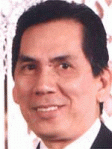 CESAR ALVIAR: A Lifetime Romantic
CESAR ALVIAR: A Lifetime Romantic
Cesar Alviar used to tell his wife, Grace, that everyone is born with a fate, and “your fate was to marry me.” He saw her dancing, long hair swaying, at a party in their native Philippines and asked where she lived. He was quiet and modest, she said, but very handsome.
It took him three years to win her heart. But he stayed romantic. After 28 years, he still brought her flowers and opened doors for her. He loved to take her ballroom dancing. Three years ago, they renewed their vows. Mrs. Alviar wore an embroidered Filipino wedding dress. Their friends teased them “You still answered `yes,’ in spite of everything?” Mr. Alviar pointed out that they had been married three times, in a civil ceremony, the religious service, and then this one.
His wife always drove Mr. Alviar, 60, to the bus station in Bloomfield, N.J., so he could get to his job as an accountant at Marsh & McLennan on the 94th floor of 1 World Trade Center. “He always kissed me before he got out,” she said. But on Sept. 11, he hesitated after the kiss. “It was like he wanted to say something, but because I was rushing, I just said goodbye.”
 MARLYN BAUTISTA: A Born Organizer
MARLYN BAUTISTA: A Born Organizer
Rameses Bautista said the cleaning crew at Marsh & McLennan loved his wife, Marlyn. She was the kind of worker who kept her cubicle and everything around it so neat “that they didn’t have anything to do,” he said.
Mrs. Bautista, 46, was a born organizer. She worked in the accounts payable department and liked to get there early “just to get things started” and stay late “to make sure everything was finished all right,” her husband said. “That was her style, always making sure everything was in its place.”
When she was a girl, Mrs. Bautista helped sponsor a town festival in Dagupan, in her native Philippines. Mr. Bautista was visiting from another part of the country, saw her, and they became childhood sweethearts, he said. Ten years ago, she became his wife. They moved to Iselin, N.J., and just last year, she received her naturalization papers. When she was not working, Mrs. Bautista enjoyed nature walks. “She was always amazed by what God could do,” Mr. Bautista said. “She’s with him now.”
 Cecile M. Caguicla: Preserver of Flowers
Cecile M. Caguicla: Preserver of Flowers
At the house in Boonton, N.J., that Cecile M. Caguicla shared with her friend Maria Luciano, there are flowers everywhere — dried hydrangeas and other delicate varieties, suspended in time. Miss Caguicla knew how to preserve them so their beauty would never fade.
She chose them from the buckets filled with blossoms at the farmers’ market that was always outside the World Trade Center on Tuesday and Thursday mornings. She was a steady patron of the market, buying baked goods from one vendor, cheese from another, stopping there on her way to morning Mass at St. Joseph’s Church. On Sept. 11, “we separated at 8:10, and she was paying for a blueberry muffin,” Miss Luciano said. “She always bought pastries for her office mates. It was a happy morning.”
Miss Caguicla, who was 55 and had emigrated from the Philippines in 1975, was a vice president in the corporate accounting department at Marsh & McLennan. Her friend is planting a garden in her memory, with hydrangeas and sunflowers and geraniums &emdash; some of the flowers she liked best. There will also be evergreens, to last forever.
 JAYCERYLL DECHAVEZ: Dreams in the Clouds
JAYCERYLL DECHAVEZ: Dreams in the Clouds
Jayceryll deChavez never came across like a know-it-all. He was smart but soft-spoken. Still, he had his ambitions. For the longest time, he had dreamed of working in one of the twin towers of the World Trade Center. He even told his mother that he wanted to build his own tower. Mr. deChavez got part of his wish. He worked as an assistant to the portfolio manager at Fiduciary Trust, a job that his parents said he loved, in Tower 2. He was 24 and had just passed the first level of a test to become a financial analyst. He was eager to take a review class for the next level next month. He lived in Carteret, N.J., with his parents, Bibiano and Asuncion deChavez. Despite his humble manner, his parents said, Mr. deChavez never had to struggle to ace tests. He had been at the top of his class from elementary school through Rutgers, where he studied finance and economics.
“He was a very ambitious guy,” his father said.
BENILDA DOMINGO: Bus Ride to Romance
Benilda Domingo was heading home to Laoag City in the Philippines from Manila after two years of menial work in Singapore. Relatives introduced her to the bus driver, Cefar Gabriel. While she had been working abroad, one of her brothers had married one of Mr. Gabriel’s sisters. By the end of the nine-hour bus trip, they were in love.
The couple had three children &emdash; Daryl, 11, Yvonne, 5, and Lucki Angel, 2. But for 14 years they kept postponing their wedding, said Dorothy Gabriel, Ms. Domingo’s sister- in-law, because Ms. Domingo’s parents, living in Hawaii with their eldest son, were petitioning United States authorities to allow Ms. Domingo to immigrate, and a spouse would have slowed the process.
Last year Ms. Domingo’s visa finally came through, and she brought the three children to America. She planned to return to Laoag City to marry Mr. Gabriel and to bring him over, too.
She left the two younger children with her parents in Hawaii, and took the oldest with her to New York.
Ms. Domingo, 37, found work with an office-cleaning company. “She was so proud that she was hired at the W.T.C.,” her sister- in-law recalled by telephone from Canada.
Now Mr. Gabriel, still a bus driver in the Philippines, is even more desperate to come to New York. “He was so devastated,” Ms. Gabriel said. “He wants to come to see the place where it happened, and just to be with his kids.”
 Judy H. Fernandez: Hard Worker, Hard Player
Judy H. Fernandez: Hard Worker, Hard Player
Judy H. Fernandez was not supposed to be at her office in the World Trade Center on Sept. 11. She was scheduled to leave for a business trip later that day, and could have taken the morning off. But she went in to take care of a few things.
For Ms. Fernandez, 27, being conscientious was a way of life. She worked as a benefits specialist in the human resources department at Cantor Fitzgerald, and made a habit of using her skills to help friends with their careers, even landing her cousin Maria Santillan a job at eSpeed. She was so organized that she made lists of all her goals and preferences: everything from her favorite flower to her desire to marry her boyfriend, Jon Plamenco. “She knew what she wanted in life, and she was going to do what she had to do to get it,” said her sister, Emma.
“She wanted to be on the go all the time,” said her mother, Corazon. “She loved anything exciting.” Years after her brother, Rich, taught her how to ski, Ms. Fernandez took up snowboarding and taught everyone she knew. She had a large and tight-knit group of friends, and her organizational skills would often be put to use planning parties and ski trips.
Ms. Fernandez and her friends had a tradition: a monthly girls’ night. There was a girls’ night scheduled for Wednesday, Sept. 12, but because she was supposed to be out of town, her friends moved it up to Monday the 10th. Nearly all of Ms. Fernandez’s friends were there, and her family has a photo of all of them, snapped at 10:45 p.m.
Ramon Grijalvo
Sister of Ilonggo engineer killed in 911 attack speaks out
By Florence F. Hibionada
Senior Reporter, Philippine News Service (PNS)
ILOILO CITY, PHILIPPINES – “We prayed hard and now our brother got justice in heaven.”
Words from Dr. Emiliana Grijalvo – Carmona, younger sister and one of the surviving siblings of Ilonggo mechanical engineer Ramon Grijalvo.
Engineer Ramon was among the 2,948 confirmed deaths in the September 1, 2001 terror attack in American soil. Perpetuated by suicide bombers under Muslim extremist Usama Bin Laden, Engineer Ramon’s American dream was cut short ten years ago.
As much of the world rejoices in Bin Laden’s death in the hands of American forces, for Dr. Carmona, “actual closure” came way before the master terrorist’s killing.
This as she vividly recalls the day it happened and shares with Philippine News Service (PNS) the family’s ordeal thereafter.
“I was watching television when the news on the attack was reported…I did not realized then that it was the building where my brother works,” she began.
Engineer Ramon first set foot in America in 1963 following the petition to migrate made by their eldest sister, Dr. Gloria Grijalvo Madoramente. The years in between were good to the Grijalvos with Engineer Ramon and wife Nenita Baldago of Banate, Iloilo blessed with two children.
“When the attack happened, my brother Ramon was already employed with Empire Blue Cross/ Blue Shield which was in the World Trade Center “Twin Towers” building,” she continued. “Minutes into the news, I got a call from a niece informing me that their Tito Ramon was in the World Trade Center. But nobody really knew then for sure.”
What followed thereafter was to be the greatest shock for the Grijalvo clan as Dr. Carmona and her siblings back here in Iloilo City stayed glued on television for any news.
“That morning of the attack, my sister in law was telling my brother not to go to work. She asked him to stay home and wait for a delivery. But he said no..he wants to report for work. And we are all early risers, we are all punctual when it comes to work so he was there when it all happened,” she said.
Engineer Ramon’s office is on the 9th floor of the north Tower of the World Trade Center.
“My brother was brought to the hospital. To this day we do not know who helped him. Maybe it was the first responders, the New York City firemen. And we were told he was badly burned but was able to identify himself to hospital personnel. He told them his name was Ramon Grijalvo and someone kept his wristwatch and the wedding ring for safekeeping. He was in great pain so they have to sedate him deeply,” Dr. Carmona’s story continued. “While in intensive care, a Chinese-American family claimed him as their family member. We don’t know too why or how they did that but three days after, my brother died due to the severity of his burns. And that Chinese-American family got his body and buried him. They got closure thinking it was their family member as my other brother, Engineer Aurelio was presented with another body identified as Ramon. ”
“He’s not my brother, he told them and for days we were at a loss…finally we knew of the mistaken claim and eventually, that body wrongfully buried as a Chinese-American man was exhumed and there we got the confirmation, our brother Ramon was returned to us,” she said.
Since then, the Grijalvo siblings took turns in joining thousands of other grieving family members in New York as America remember all those who perished in the September 11, 2001 terror attack.
“My first impression when I was first got there in Ground Zero – grabe man sila…nga-a gin-amo gid ni nila (How could they do this? Why did they have to do it this way?)…..it’s complete devastation,” Dr. Carmona shared saying it was an overwhelming sight to be with young mothers, young wives, parents and like them, bereaved siblings.
“Bin Laden…he will now meet with his creator….I did not really think it was possible to find justice because the cause of my brother’s death and the others, it was a terroristic attack and the enemy is not easy to get,” she said. “With Bin Laden dead now though, what is next?”
Engineer Ramon’s homecoming to Iloilo happened every 2 to 3 years where they would all stay at the family home in Sta. Cruz, Arevalo, Iloilo City.
“We came from a modest family. My brothers Aurelio and Ramon grew up with our uncle-priest, Monsignor Panfilo Brasil. Ramon was closest to Aurelio. He loved Ilonggo songs and Filipino music. One of his favorites was Yoyoy Villame. He was a happy person, loving family man,” Dr. Carmona said of her brother.
Engineer Ramon left behind his wife who has since remained unmarried. He has two children, one now successful lady lawyer based in New York.
“My sister-in-law after the attack had difficulty moving on. One year after it happened, we visited her and everything was still in place, untouched. My brother’s beer bottle still there on the table where he left it. Even the peanuts he loved to eat, left untouched. His pajamas under his pillow, still there and when we asked her to keep it away, to move on, I remember how my sister-in-law cried and begged us not to do that,” she said.
Engineer Ramon was 58 years old when he lost his life that fateful day.
He was a Mechanical Engineering graduate of the University of San Agustin here in Iloilo City. He was one of the 12 Grijalvo siblings who hailed from Guimbal, Iloilo.
In one of the memorial set for the victims and heroes of 9/11, Ramon’s daughter Rachel honored her father in words spoken from the heart.
“Ramon Grijalvo was much more than the title under his name could ever tell you. He was a devoted husband, married 23 years. He was the father of two children, 18 and 16 at the time he was taken away. I’m his daughter. I’m 20 years old now, and no matter how much time has passed, it is still so hard to see his picture here. I wish he was still here with us, but now I only have the wonderful memories he has left me.
I’ll always remember your laugh, Papa. And how you would clap your feet when I would play the piano. I miss you so much. I love you. ”
And yet another message for the world to see posted back in February 8, 2005.
“Ramon Grijalvo was my father, and he was taken away from we when I was only 16 years old. He was the most amazing father and husband to my mother, and we will never forget him. He lived a full, happy life and knowing that eases our pain. What I miss the most about him is his laugh. Rest in Peace, Papa. I love you.”
 Frederick Kuo Jr.
Frederick Kuo Jr.
Part of Church’s Soul Is Gone
At the Community Church of Great Neck, Frederick Kuo Jr. was always at the center of everything. His parents had also been active there and so he just grew up with it. “He poured a lot of everything he has into the church,” said Fred Kuo, the oldest of Frederick’s four children. “So many people were dependent on him for everything.”
Frederick’s contributions ranged from helping to set up for services to giving occasional readings to arranging for members to get there, even when it meant enlisting his children or driving them himself.
Recently, the church merged with a Chinese congregation, to bring new young members into its aging congregation. As usual, Frederick, whose mother is Filipino and whose father is Chinese, was right there to help bridge the gap. His son said that the new members identified with his father even though he was Asian-American and didn’t speak any Chinese. “I’ve often thought to myself,” Fred Kuo said, “that church wouldn’t run without him.”
Profile courtesy of THE NEW YORK TIMES.
Posted by jessa on 05/10/2011 12:56 PM
 Arnold A. Lim: Man on the Verge
Arnold A. Lim: Man on the Verge
Arnold Lim, an analyst with Fiduciary Trust Company International, had promised his mother that he would be married by the time he turned 30. He was close to making good on his pledge.
He was engaged to be married to his girlfriend of seven years, Michelle Leung, and her family gave an engagement party for the couple two weeks before the attack on the World Trade Center, where Mr. Lim worked. He was 28; the marriage was planned for September this year.
“He was so happy,” said his mother, Amparo Lim. “He told me, `I’ll buy a big house, and you will live there, too.’ And I told him, `No, you will live your own life.’ ”
Mr. Lim, the youngest of her three sons, lived with her in the apartment in Stuyvesant Town where he was raised. She misses him terribly.
Jorge Lim, the eldest son, said that because he was almost 10 years older than Arnold, their relationship was often more like father and son. “I remember changing his diaper, cleaning up after him,” Jorge said. “I would take him everywhere. I remember the first time that he went to kindergarten, everyone had fun because I was the one who used to go on a lot of school field trips with him. One of his classmates remembered recently that there was always an older person going to these trips with Arnold. They used to think I was a parent.”
Profile published in THE NEW YORK TIMES on May 5, 2002.
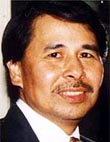 Manuel L. Lopez: Craving Greens and Gadgets
Manuel L. Lopez: Craving Greens and Gadgets
When Manuel Lopez was not putting in long days as a corporate tax manager for Marsh & McLennan in 1 World Trade Center, he liked to tend the big garden he and his wife had in Jersey City. The backyard plot bore beans, tomatoes, mustard greens ‹ the last an important ingredient in sinigang, a tangy soup of Mr. Lopez’s native Philippines.
But while Mr. Lopez, 54, liked vegetables, he was crazy about gadgets and electronics. DVD players, laser discs, cameras ‹ “Everything that came out, he had to be the first to get it,” said his daughter, Minnie Morison. “We have five or six televisions and there’s only three bedrooms in this house.”
Mr. Lopez often trawled the Internet in search of hot deals. “There was this DeWalt drill that kept being auctioned on uBid,” his daughter said. “He wanted it so bad, but he was stubborn and he was always outbid. I was like, `Why don’t you just go to Sears and buy it, and I’ll pay the difference?’
“A couple days after the World Trade Center, a drill showed up in the mail. It was really weird for us.
“No one’s opened it.”
Profile published in THE NEW YORK TIMES on November 4, 2001.
Manuel Lopez, 54, home was his palace
After moving to Jersey City from the Philippines in his mid-20s with his pregnant wife, Manuel Lopez found his passion in creating a comfortable place for his family.
In recent months, he organized the remodeling of the family’s duplex, paying close attention to light fixtures and other details. He also filled with house with plenty of electronic gadgets, from DVD players, stereos and cameras to a TV set in each bedroom, his family said.
It was on a morning during which Mr. Lopez, 54, known as Manny, exercised that passion for nesting that his life was cut short. Moments after arriving at work on the 98th floor of Tower One of the World Trade Center on Sept. 11, he called his wife, Rosalia, to go over some details of their remodeling project.
Ten minutes after he hung up, the first jet struck the World Trade Center. His wife, hearing the news on the radio, tried to call back, but she was not able to get through to him.
“He wanted to provide a better life for his future family,” said his daughter, Minnie Rose Morison, also of Jersey City.
Mr. Lopez knew hard work would provide a better future for his family, they said. He was vice president of the federal tax department at Marsh & McLennan, his employer for 15 years, and often arrived at work early.
On the fateful morning, Mr. Lopez was driven to the PATH station in Jersey City by his son, Mannie Jay Lopez, who had returned home from an overnight work shift before heading out to a class at New Jersey City University.
“He always had a joke to tell,” his son said. Mr. Lopez was fond of electronic gadgets, and was an avid reader of Stereo Review and other magazines to keep up with trends in electronics.
In addition to a new TV in each of three bedrooms, Mr. Lopez kept a classic TV in the kitchen, a Sony from the 1980s, for “sentimental” reasons, his son said.
“He joked a lot and he loved to go shopping,” his wife added.
It was the example of hard work, done with a sense of humor, that his son remembered. “He wanted to show me a better life,” his son said.
Mr. Lopez’s remains were not positively identified until more than two months after the tragedy, on Nov. 16. Officials made the identification using DNA tests, his daughter said.
In addition to his wife, daughter and son, Mr. Lopez also is survived by two sisters, Jovita “Betty” Lozano of New York and Avelina Cabal; and two brothers, Geronimo Montero and Benjamin Montero, all of the Philippines; and other relatives.
A graveside service will be held at 10 a.m. today in Arlington Cemetery, Kearny.
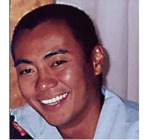 Carl Allen Peralta
Carl Allen Peralta
5th Filipino 9/11 victim is identified
Silvestre, Edmund M. Filipino Reporter 10-03-2002
The New York City’s Office of the Medical Examiner has positively identified Filipino-American Carl Allen Peralta of Staten Island, N.Y., as among those who died in the Sept. 11 attack on the World Trade Center, the Filipino Reporter has learned.
Peralta, 37, a broker with Cantor Fitzgerald on the 104th floor of WTC One, was identified following the standard comparison of nuclear or mitochondrial DNA from remains with samples provided by relatives.
The medical examiner did not specify what Peralta’s body part was recovered from the rubble that killed more than 2,800 people.
Profile by George Berkin published in THE STAR-LEDGER.
 Maria Theresa Santillan: Busy With Wedding Plans
Maria Theresa Santillan: Busy With Wedding Plans
Maria Theresa Santillan, known to her family as Maritess, was the meticulous, well-organized type. A customer service representative with eSpeed, the Cantor Fitzgerald subsidiary, she had been busy since last November planning a wedding scheduled for next May.
Her mother, Ester Santillan, said her 27- year-old daughter had filled up a binder with information about every detail — music, reception, flowers, photographer, wedding gown, church — and by the time she disappeared from the 103rd floor of 1 World Trade Center everything except for the invitations was set. “She was smart, beautiful, a very loving daughter,” said her mother. “She had the kind of smile that lit up a room whenever she walked in.”
Ms. Santillan, who had two younger brothers and still lived in the family home in Morris Plains, N.J., planned to invite 250 people to celebrate her wedding to Darren Sasso, a civil engineer who had been her boyfriend since high school. The wedding was to have taken place at the Cathedral Basilica of the Sacred Heart in Newark.
Ms. Santillan had wanted to release doves after her wedding to symbolize love and peace. After her memorial service, six doves were released into the sky.
Profile published in THE NEW YORK TIMES on November 6, 2001.
Maria Theresa Santillan, 2 vibrant cousins loved working in New York
Maria Theresa Santillan and Judy Hazel Fernandez had always been close so the 27-year-old first cousins welcomed the chance to work together at the World Trade Center.
Miss Fernandez got a job at Cantor Fitzgerald about three years ago, and when a job opened up at the company’s eSpeed subsidiary, the first person she thought of was her cousin.
“It was always a dream of my sister’s to work in the city,” Miss Santillan’s brother, Victor, said. “I think it was just New York and the prestige of actually working at the World Trade Center.”
Working with her cousin made the dream even better.
“They were closer than cousins,” recalled Ms. Santillan’s father, Ex. Some people even thought they looked like sisters. Both majored in biology and were Rutgers University graduates. Miss Santillan attended the Newark campus; Miss Fernandez, New Brunswick.
Also very close to her family, Miss Santillan lived with her parents in Morris Plains. Her father dropped her at the PATH station a few times a week — Sept. 11 was one of those days.
“We carpooled that morning together,” said Ex Santillan, who is the brother of Ms. Fernandez’s mother. She worked in the North Tower on the 103rd floor, her cousin on the floor above.
“The North Tower was the first that was hit,” Santillan said. “She called me about 9, after the building was hit. She had a frantic, high-pitched voice and was crying that the building was hit by a plane. I thought it was a small plane, and I told her to get out of there, to keep cool and not panic.”
He didn’t hear from her again.
Just two months earlier, the families celebrated Miss Santillan’s engagement. Everyone was looking forward to the May wedding. Miss Fernandez was to be maid of honor.
“She was very smart, very intelligent, very loving, very witty — everything you can think of,” Miss Fernandez’s mother, Corazon, said of her daughter who lived in Jersey City but was a frequent visitor to her parents’ Parlin house. “Whenever she came home, she said, ‘Mom, I’m here,’ and kissed me and asked for her dog (an American Eskimo named Brook).” Miss Fernandez could not have pets in her apartment.
The weekend before the tragedy, Mrs. Fernandez told her mother she was going on a business trip on Sept. 11.
In a Sept. 10 phone call, Miss Fernandez mentioned she would go to work before leaving. She told her mom a limousine would pick her up at the Trade Center.
“I asked her why she was going to work when she had such a long trip, and why not stay home and have the limo pick her up at the apartment?” Mrs. Fernandez said. Her daughter said she had things to do. They exchanged, “I Love Yous.”
Mrs. Fernandez said her daughter and her niece “were full of life, full of ambition.”
Rich Fernandez of Pennsylvania, Miss Fernandez’s brother, said his sister had talked about a future with her boyfriend, Jon Plamenco.
“The four (the cousins and their boyfriends) spent a lot of time together — they were inseparable,” Rich Fernandez said.
Ex Santillan also recalled the engagement party.
“They had about 90 guests — friends and relatives — everybody was happy and looking forward to the wedding next year. We considered her fiancé part of our family. He and his parents have been with us almost every day since Sept. 11. He is like a brother in our family.”
“We were together since my sophomore year in high school,” Darren Sasso of Parsippany said of Ms. Fernandez. “We were together like 91/2 years through thick and thin.”
The 26-year-old added, “There was just something about her . . . her personality . . . she was obviously a beautiful girl . . . she had a great family. There was no reason I wouldn’t want to marry her.”
A memorial service for the cousins will be held at 10 a.m. Nov. 3 at Cathedral Basilica of the Sacred Heart, 89 Ridge St., Newark.
In lieu of flowers, the families ask that contributions be made to a scholarship fund that still is being planned.
Miss Fernandez also is survived by her father, Cirilo Corazon; and her sister, Emma of Philadelphia.
Miss Santillan also is survived by her mother, Ester; and brother, Raymond, both of Morris Plains.
Profile by Lisa Irizarry published in THE STAR-LEDGER.
 Rufino Conrado F. “Roy” Santos: Still a Tourist
Rufino Conrado F. “Roy” Santos: Still a Tourist
Roy Santos was a perpetual tourist in the city that he loved. He had lived in New York for nearly six years, but still relished it. His mother, Aurora, called him “a Broadway addict.” He had to get tickets to all the latest shows, loved “The Producers,” loved “The Lion King.” On the memorial Web page Mr. Santos’s friends created, there are photographs of him against the New York skyline, the Statue of Liberty, the World Trade Center.
Last Christmas, his brother Ronald and Ronald’s wife, Rosemary, stayed with him on the Upper East Side. It was a typical Roy good time. They saw “Cabaret,” had Christmas brunch at the Marriott Hotel’s revolving restaurant, and spent the rest of the day in Central Park, playing in the snow. On New Year’s Eve they were supposed to go to Times Square, but Roy Santos got the flu. It was the second year in a row that he had gotten sick and missed it. “Next year, I’ll be ready,” he told his brother.
On Sept. 11, Mr. Santos, 37, was at the trade center again. This time, Mr. Santos, a computer consultant for Accenture, was working.
Profile published in THE NEW YORK TIMES on November 16, 2001
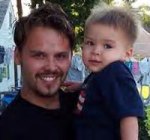 David Marc Sullins
David Marc Sullins
It’s frustrating Every year when the anniversary of 9/11/01 comes, we see the horrifying images and sit through the documentaries about that day. Some of us watch them, unable to look away, even though doing so brings back memories and emotional scars that may only be starting to heal from the previous year.
In a way though the scars get a tiny bit better and while never forgotten, these memories will be a part of us that were at 9/11 forever.
You can’t help but notice during these special reports and documentaries the constant remembrance of the FDNY and NYPD yet no mention of EMS. You see hand written signs that say “God Bless FDNY & NYPD”, the pictures of flags being raised by FDNY members, and the clips of speeches thanking these agencies for their sacrifice.
Of course the loss of the members of these agencies was tragic and they are heroes – one and all. It is no fault of the FDNY or NYPD that the 8 EMS professionals who died that day did not get the same hand written signs or public mentions. As bigger organizations they are better known, and perhaps our society simply sees EMS as an extended part of the emergency services community.
The question is was their sacrifice truly unnoticed? Take one EMS member David Marc Sullins. David was an EMT with Cabrini Medical Center who was working a double shift when the first plane hit. Without thought for his own safety he raced to the scene – his peers noticed.
David pulled several people with various injuries from the South Tower and transported them to the hospital – these patients noticed.
He returned a final time to the base of the South Tower and went back in to help more people, despite the growing concern that it may collapse – his partner noticed.
It has been written in several other tribute articles to David that he was a dedicated EMT, just getting into paramedic school; a person who loved his job and the people he worked with. Often he would give small toys to his pediatric patients to ease their fear and anxiety – those writers and children noticed.
David did not make it home that day; he never made it out of the South Tower when it collapsed. His partner awoke in a hospital bed wondering what happened, alive – but noticing David wasn’t with her.
At 30 years old, being an EMT in the greatest city in the world on a day that is one the greatest tragedies of the United States. David didn’t go to the Towers looking for recognition. Neither did the other 7 EMS professionals, 341 firefighters, 23 police officers, 37 Port Authority Officers and so many other rescue workers that perished that day.
They went for their love of the job, their sense of duty to the people, and from a calling few others can relate to. Those of us who reflect each year on the sacrifice of these emergency personnel, and who are inherently connected to the 8 EMS professionals like David Marc Sullins, know this love, this dedication and hear the call. But most of all – we noticed.
David’s remains were recovered on March 23rd 2002 in the South Tower rubble. Perhaps this gave some closure to his wife, family and friends – a group of people who do not have to “notice”. They know David’s ultimate sacrifice, his heroism – and this writer hopes – their own.
From: www.9-11heroes.us/v/David_Marc_Sullins.php
I always think of Marc as an obedient and hard-working son. He was a gifted musican who can play the piano by ear with my favorite song “right here waiting” by Richard Marx. He would do his chores around the house without complaining. He would make us laugh with his good sense of humor especially everytime he impersonate actor Jim Carrey.I can still remember how happy he was when I bought him his first car and I named it “yellow boat” coz the color was yellow. We travelled to his homeland (Philippines) together. Although I am not his biological mother, Marc recognized me as his own mother and never fail to call me on mother’s day and my birthday (June 12). His birthday is a day after mine, June 13. Now, I missed those calls. I found his biological father in Sioux Falls, SD and also his biological mother in the Philippines. Although it was a bittersweet reunion, he was happy to finally met both of them. I can never forget his face when he hug me and thank me for finding his biological parents and sister because he knew that I worked so hard in finding them because at that time adoption papers were sealed in Washington, DC.
I always think of Marc and still cry everytime I look at his picture. I will always miss him and will never forget and cherished our conversations together (the promises he made to me, his goals, and the happy times we share together as a family.
*** Posted by His adoptive mother on 2006-09-07
 Hilario “Larry” S. Sumaya: The Ski Club Ambassador
Hilario “Larry” S. Sumaya: The Ski Club Ambassador
Larry Sumaya’s friends and family had a lot of names for him. Like Phil, short for Filipino, his ethnicity. Or Horatio, because Hilario was the first name on his birth certificate. Or Gooch and Clem, for reasons no one can quite recall.
Then there was, um, Christie. He got that one after showing up on the slopes wearing a black-and-pink skiing outfit. Unfortunately for Mr. Sumaya, the color scheme was a tad too unisex. “There was a nice-looking girl wearing the same jacket,” said Bob Sitar, a friend and fellow member of Mr. Sumaya’s ski club. “It was pretty funny, and we teased him about it.”
But the good-natured Mr. Sumaya, 42, took the kidding in stride, always ready to tackle the steep fast curves of the mountain, the rolling greens of the golf course, the waves of the Jersey Shore, the social currents of big-city bachelor life. “He was always smiling, very outgoing,” said his sister Charito LeBlanc.
Mrs. LeBlanc and her husband, Joseph, miss him the most on Sundays, because that was the day Mr. Sumaya would spend time at their home near his in Staten Island, watching sports, smoking a cigar in the backyard, firing up the barbecue.
Mr. Sumaya, a technology manager at Marsh & McLennan, liked to talk politics and knew how to press home a point. “He was tough to argue with,” said another friend, Tom Todaro. But he was also slow to anger, and played the ambassador in his ski club, putting newcomers at ease.
Profile published in THE NEW YORK TIMES on December 19, 2001
 Hector Tamayo
Hector Tamayo
Hector Tamayo loved to sing: Engelbert Humperdinck and Elton John, country music and campfire favorites, especially the one that begins, “Today, while the blossom still clings to the vine . . .”
At home in Holliswood, Queens, he had a karaoke machine with thousands of songs. “He had a lot of friends, most of them are relatives, and on Friday nights and Saturday nights and sometimes weeknights they would drink together and sing together,” said his sister-in-law, Sylvia Mercene.
Many of those relatives lived with Mr. Tamayo at some point, because he opened his house to family and friends when they came to the United States from Aklan province in the Philippines, as he had in 1980. “As a joke we call his house the Ellis Island,” Ms. Mercene said. Five of his six siblings are now in the United States, as are his wife, Evelyn, and their two children, Ian, 20, and Pamela, 16.
A civil engineer, Mr. Tamayo, 51, was working in 2 World Trade Center on Sept. 11.
His family remembers him as a happy person who loved jokes, his family and, of course, to sing: “A million tomorrows will all pass away/Ere I forget all the joys that were mine today.”
Profile published in THE NEW YORK TIMES on November 24, 2001.
 Cynthia Motus Wilson: Instiller of Love
Cynthia Motus Wilson: Instiller of Love
Cynthia Motus-Wilson was a people person, according to her husband, William Wilson, and their daughter, Cynthia Motus-Chan. “She was very caring,” Mr. Wilson said. “A small woman, five- foot nothing. But a heart bigger than Alaska.”
Ms. Motus-Wilson, 52 and the head receptionist at International Office Centers Corporation in the World Trade Center, was proud of the culture of her native Philippines but had recently become an American citizen. She was an accomplished craftswoman, creating everything from delicate flower arrangements to wall hangings. She was about to move with her husband into her first house, where she would have a studio, in Warwick, N.Y.
After her death, Ms. Motus-Chan and her brother Braulio Jose found a loving note from their mother attached to a life insurance policy and adorned with a drawing of a smiling face. She had highlighted her request that the two take care of each other. “She really trusted myself and my brother,” Ms. Motus-Chan said. “This is still hard. But it’s easier because she made us independent and strong.”
Profile published in THE NEW YORK TIMES on December 30, 2001
 Ronald Gamboa
Ronald Gamboa
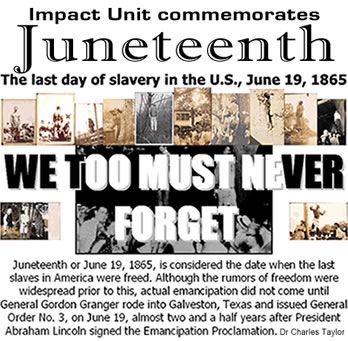
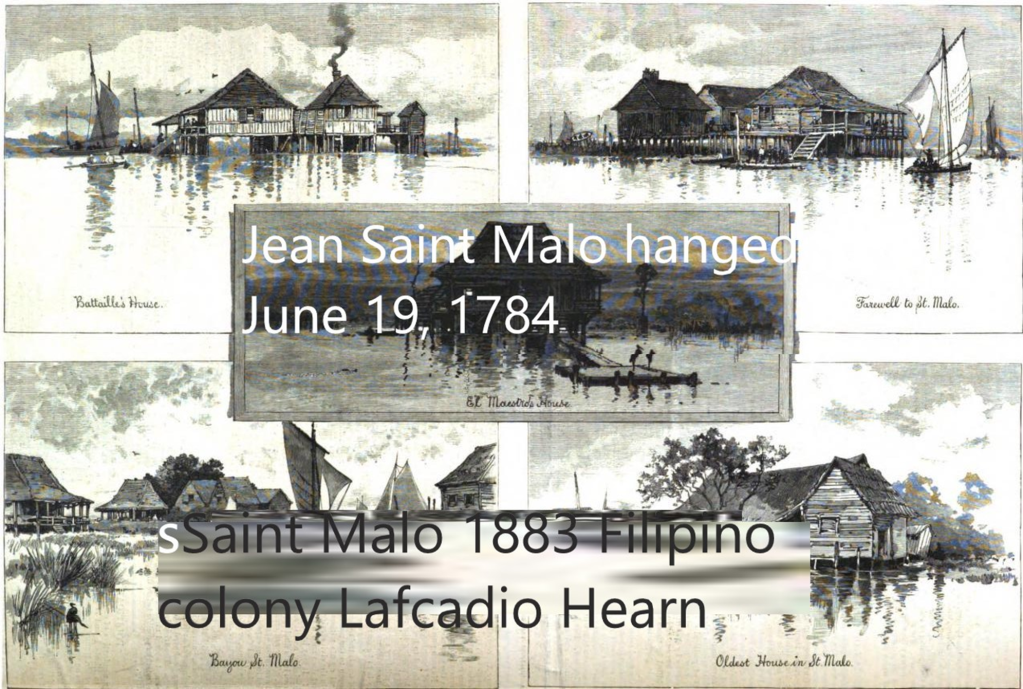


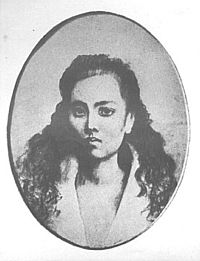 Unfortunately, the affair was doomed in the very beginning. He was boarding in his uncle’s house in Intramuros just starting college, when he met just the 11 years old Eleonor. She was a “pretty woman with a high forehead, soft and wavy hair, almond eyes, small and pensive mouth, and engaging dimples. She was described as a talented, mature, and intelligent lady. She played harp and piano and had a charming voice. She could write and read Spanish. The puppy love blossomed into secret love letters written in different languages including English. Hidden communications because Leonor’s mother was against Leonor pen pal lover. Friendly spies of Rizal informed of her activities from Camiling to Dagupan. They were also distant cousins.
Unfortunately, the affair was doomed in the very beginning. He was boarding in his uncle’s house in Intramuros just starting college, when he met just the 11 years old Eleonor. She was a “pretty woman with a high forehead, soft and wavy hair, almond eyes, small and pensive mouth, and engaging dimples. She was described as a talented, mature, and intelligent lady. She played harp and piano and had a charming voice. She could write and read Spanish. The puppy love blossomed into secret love letters written in different languages including English. Hidden communications because Leonor’s mother was against Leonor pen pal lover. Friendly spies of Rizal informed of her activities from Camiling to Dagupan. They were also distant cousins.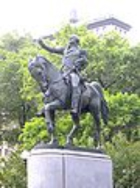
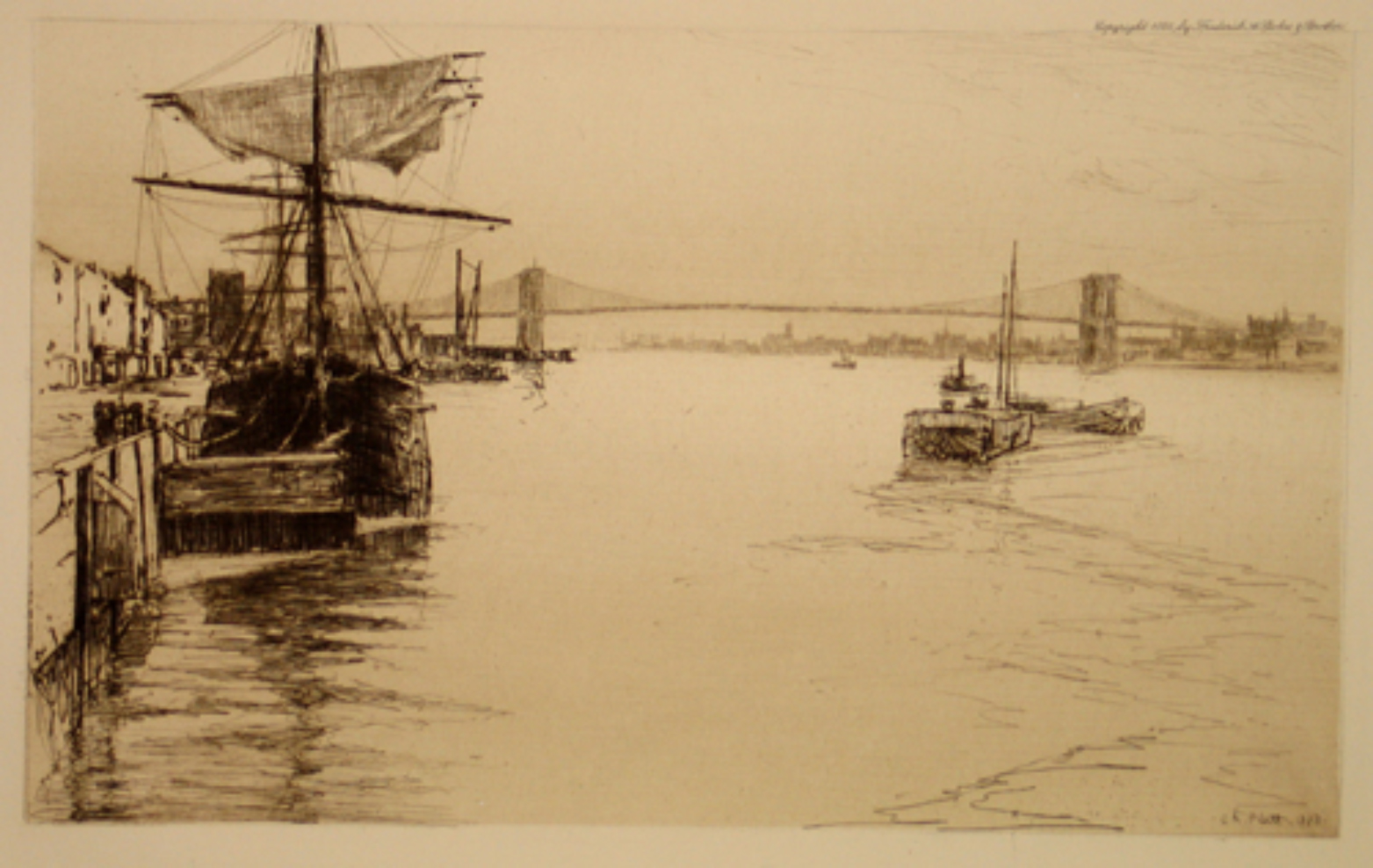
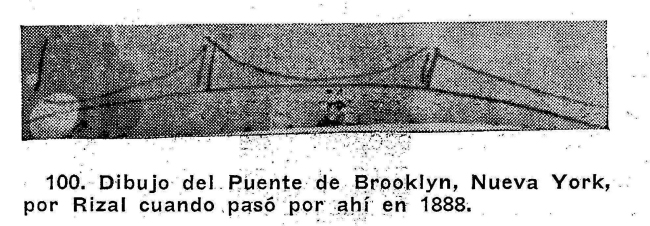

















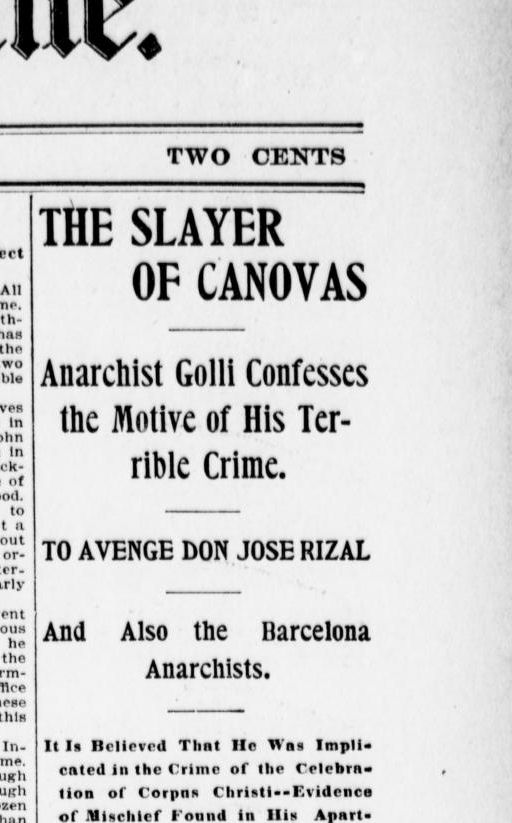
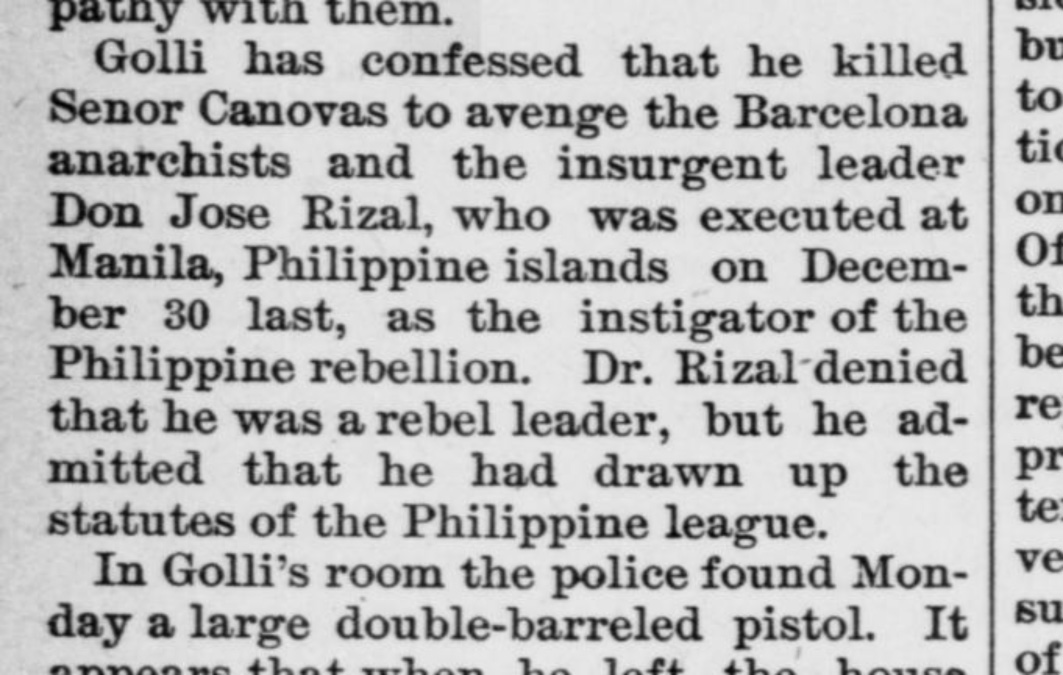
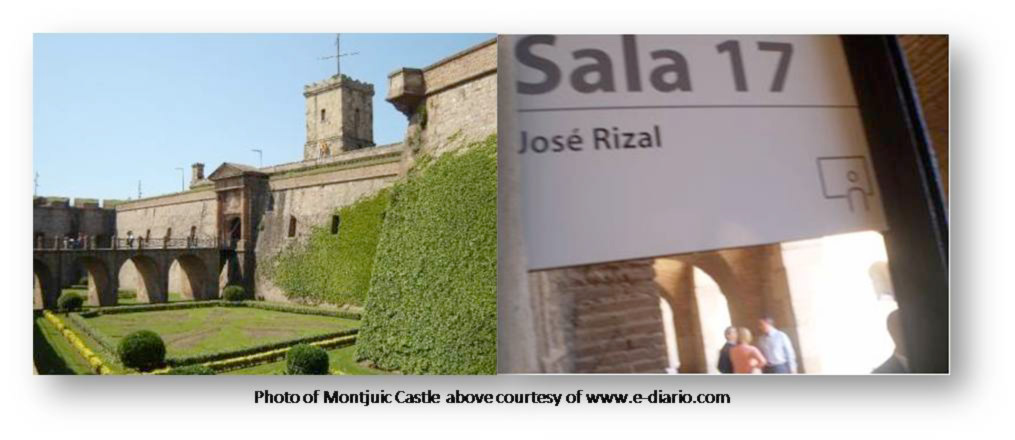
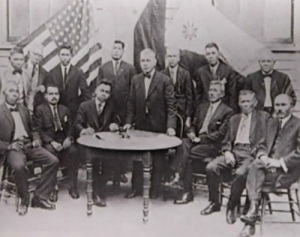
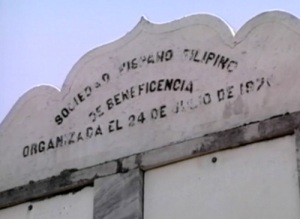
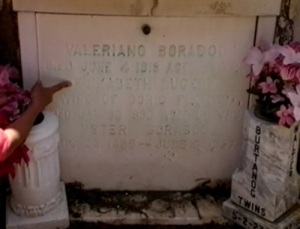 Note: the 1906 Filipino magazine information are from Eloisa Borah collections of memorabilia and Alex Fabros’ file. Filipino tomb data from Rhonda Fox, the custodian of Burtanog’s family history. the last picture taken after Katrina.
Note: the 1906 Filipino magazine information are from Eloisa Borah collections of memorabilia and Alex Fabros’ file. Filipino tomb data from Rhonda Fox, the custodian of Burtanog’s family history. the last picture taken after Katrina.